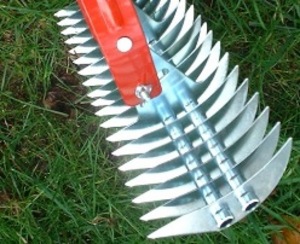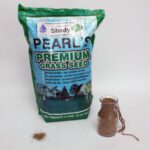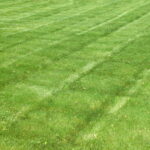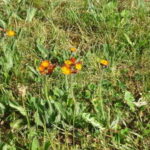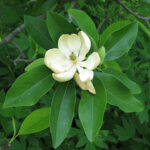Those brown spots on your lawn are likely thatch, a tangled combination of dead grass, roots and leaves. Besides looking bad, the thatch is contributing to lawn care failures. Though you can seed a lawn almost any time of the year, fall is the typical time to lay seed. To increase the odds that the grass seeds reach the ground, plan to dethatch the lawn before seeding.
Dethatch Rake or Thatch Rake
Call it what you want the purpose of the unique dethatch rake is to pull the thatch from the ground leaving the healthy grass behind. The dethatch rake has a two-sided head that is about 15 inches wide. Tines on one side are for pulling up thatch; tines on the opposite side are for cultivating. So why not use a garden rake instead of a dethatch rake?
The dethatch rake is far better than a garden rake at the task of removing thatch. Pull the garden rake through thatch and you have a rake full of thatch that you have to pull out of the tines. The dethatch rake has curved tines so after you pull the dethatch rake and the tines are filled with thatch, you push the rake backward and the tines are cleared.
Dethatch rakes now come with a pivoting head that can be adjusted by loosening two wing nuts. This added control will allow you to adjust the angle of the tines for a deeper or shallower swath through the grass. You might want to adjust for a shallower swath if you have a very thick layer of thatch so the rake is less likely to hop or get held up from the tangled mess. You will need to make repeated strokes, but they will be easier to make.
How to Dethatch the Lawn
Start by mowing the lawn to two inches or less. With shorter grass height, you can more readily see the thatch and the grass is less likely to get wrapped around the dethatch rake’s tines where it could get pulled from the ground.
Place the dethatch side of the rake on the ground, holding the handle just like you would if using a garden rake. The tines on the dethatch side of the rake are straight while the tines on the cultivating side of the rake are slightly wavy.
Pull the dethatch rake toward you and then push it in reverse to free up the thatch from the tines. To see how well one pull of the rake did, use a leaf rake to comb the thatch away. If there is still a lot of thatch on the ground, then you may need to make two or three forward/backward pulls of the dethatch rake to clear the area (or adjust the pivot head). If most or all of the thatch is gone from the ground, then move the rake to slightly overlap the area you just finished and pull/push the rake again. Consider the process to dethatch the lawn like pushing and pulling a vacuum cleaner.
When you are finished dethatching, you will need to use the leaf rake to gather the thatch. Yes, dethatching the lawn, raking up thatch and then spreading lawn seed is a labor intensive task. You will appreciate the labor when you see a thicker, greener. The thatch, by the way, can be used elsewhere or disposed. Thatch can be spread under an evergreen, piled around roses to protect them for the winter or used as a mulch topper in outdoor planters.
_______________________
Pictures and text ©Barbara Raskauskas
Resource: AllAboutLawns
